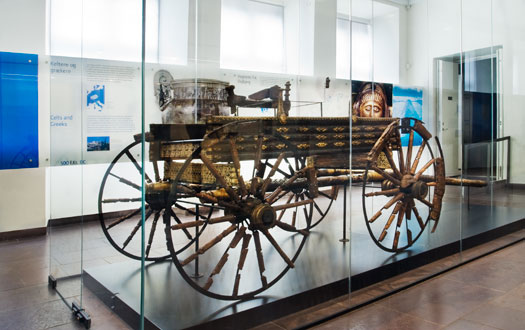Ritual carriages
The wagons known from the Danish area could have several functions, and perhaps they were used in different ritual contexts. In the first century BC the Roman writer Tacitus describes the use by the Germani of sacred carriages. Of northern Germanic peoples he writes:
"that they universally join in the worship of Nerthus; that is to say, Mother Earth. They believe she interposes in the affairs of man, and drives around to the various peoples. On an island in the Ocean stands a sacred grove, and in it stands a chariot dedicated to the goddess, covered over with a curtain. Only one priest may touch it. He senses when the goddess is present, and with profound veneration attends the motion of the chariot, which is always drawn by yoked cows. Then it is that days of rejoicing always ensue, and in all places whatsoever which she descends to honour with a visit and her company, feasts and recreation abound."
The carriages were costly and time-consuming to make. Whether they accompanied a magnate to the grave or were sacrificed in a bog, they must have had great significance.

